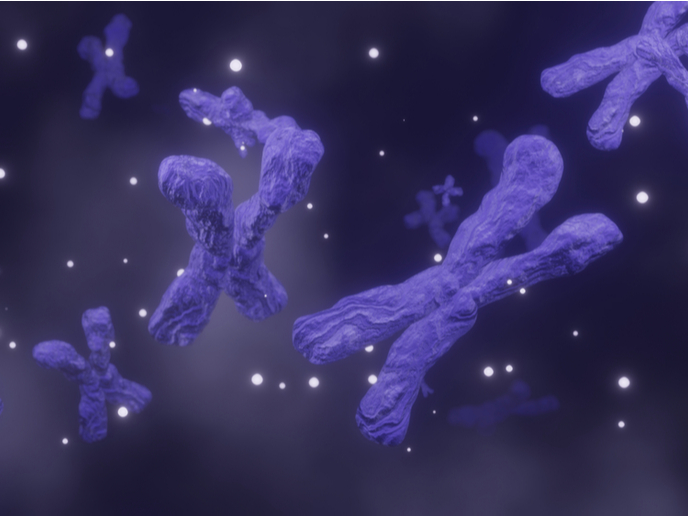Untangling the secrets of DNA in virtual space
Nearly every type of cell in your body contains two metres of DNA, wound up to fit inside a nucleus no wider than one tenth the breadth of a human hair. Understanding the structure of this tightly wrapped DNA was the goal of the EU-funded THREEDCELLPHYSICS project. A hair cell and liver cell have the same DNA, but very different functionality. This difference is linked to epigenetic pieces of information appended to the DNA strand as biochemical tags. “Our interest is in the structure of chromosomes and genes, and how this links with function,” explains Davide Marenduzzo, project lead. “We came up with a bottom-up model to explain this in a general way.”
Polymer modelling
Marenduzzo’s approach was to create a digital version of DNA, using polymer modelling software that is commonplace in physics. Using this, they could predict which parts of the chromatin – the name given to DNA and its accessory proteins – may lie in close contact with each other. For example, proteins in the nucleus tend to form small and numerous droplets, which Marenduzzo and his colleagues refer to as microphase separation. These clusters are related to transcription, as genes in the DNA chain that lie in close physical proximity tend to be expressed at the same time. Simulating such a complex structure required the use of supercomputers and a combination of physics, biology and polymer modelling. “Polymer modelling is a traditional physics technique, but the very large scale of the biophysical simulations we perform are not typical,” adds Marenduzzo. “For chromosome modelling there are only a handful of groups in the world who do such large simulations.”
Mechanistic approach
The team’s approach set them apart from most of these other groups. “A lot of people start from the data and create models to fit this data,” notes Marenduzzo. “We had a mechanistic focus, we started with a hypothesis and generated predictions based on that, and tried to prove them through further experiment.” Their predictions were tested using chromosome conformation capture (3C) and Hi-C, molecular biology techniques that grab areas of close proximity and sequence them for identification. Details of the work are discussed in a preprint available online. As well as looking at different cell types, Marenduzzo’s team predicted the effects of the chromosome deletion which gives rise to DiGeorge syndrome. Most recently, the group developed the Hip-Hop model, or ‘highly predictive, heteromorphic polymer’, which is now being used, among other things, to study the difference between healthy and cancerous cells.
Gene catalogue
The work was supported by the European Research Council. “I was able to give two talented people 5 years of placement, you can’t do that with many other grants,” says Marenduzzo. “It helps a lot to have that continuity. The flexibility was also really good – if I had the right person at the right time I could recruit them.” Next, the Marenduzzo group plans to develop a second version of Hip-Hop and catalogue all possible structures of genes. “We’re really excited about this, it will be a great resource for experimentalists. If you have a gene of interest, you will be able to use these results to see what 3D predicted structures it has.”
Keywords
THREEDCELLPHYSICS, polymer, modelling, DNA, protein, structure, hip-hop, chromosome, conformation, capture







